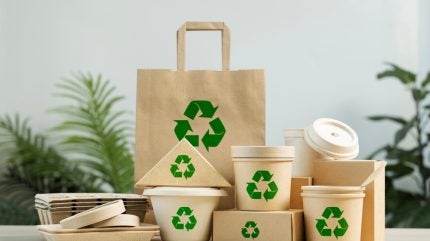
The packaging industry is undergoing significant changes as global material supply shifts in response to the energy transition. With growing emphasis on sustainability, manufacturers are rethinking their material choices to meet new environmental and economic challenges.
This shift affects not only the availability and cost of key materials but also the way packaging is designed and produced.
For many consumers, packaging is an everyday part of life, used in everything from food storage to product protection. However, few may realise how deeply the industry relies on materials like aluminium, plastics, and paperboard.
These materials are now at the centre of a transformation driven by the push for cleaner energy and reduced carbon emissions. As industries compete for these resources, the packaging sector must find ways to maintain supply without compromising sustainability or affordability.
Changing demand for key materials
The transition to low-carbon technologies is reshaping the materials landscape, increasing reliance on metals such as aluminium and copper. These materials play a crucial role in packaging production, particularly in lightweight and recyclable solutions.
However, their growing use in renewable energy infrastructure and electric vehicles is placing pressure on supply chains, leading to potential cost increases for the packaging sector.
At the same time, there is a reduction in demand for thermal coal, historically a major component in materials processing. This shift aligns with broader decarbonisation goals but presents cost implications for packaging manufacturers reliant on coal-based energy.
Companies are now exploring alternative energy sources and production methods to maintain efficiency while reducing emissions.
Challenges in sustainable material sourcing
Sourcing materials sustainably is becoming a priority for the packaging industry. The increasing use of recycled aluminium and bio-based alternatives reflects a shift towards reducing environmental impact.
However, ensuring a stable and affordable supply remains a concern, particularly as competition for these materials rises across different industries.
The industry must also navigate regulatory changes aimed at promoting sustainability. Stricter requirements on recyclability and carbon footprint reporting mean that packaging producers need to invest in new technologies and processes.
Innovations in material science, such as biodegradable coatings and improved barrier properties in recyclable packaging, are gaining traction as companies seek to balance functionality with sustainability.
For everyday consumers, these changes mean packaging that is more environmentally friendly, such as compostable trays, recyclable pouches, and reusable containers.
However, these innovations require careful material selection and infrastructure support to ensure their benefits are fully realised.
Opportunities for innovation and adaptation
Despite the challenges, the evolving materials landscape presents opportunities for innovation. Advances in artificial intelligence (AI) and data analytics are enabling more efficient material use, helping manufacturers optimise designs and reduce waste.
AI-driven forecasting also allows businesses to anticipate supply chain disruptions and adjust sourcing strategies accordingly.
Additionally, collaborative efforts between packaging companies and material suppliers are fostering new business models. Joint investments in closed-loop recycling systems and alternative material development could help stabilise supply and enhance long-term sustainability.
For consumers, these advancements could mean packaging that is not only more sustainable but also more functional—lighter, stronger, and designed for multiple uses.
Businesses that invest in forward-thinking solutions will be better equipped to meet the growing demand for eco-friendly packaging while ensuring affordability and accessibility for all.
As the industry adapts to these changes, companies that proactively invest in sustainable practices and innovation will be better positioned to navigate the complexities of the evolving materials landscape.
The future of packaging will be shaped by how well businesses can integrate new materials while maintaining cost efficiency and meeting environmental targets.



